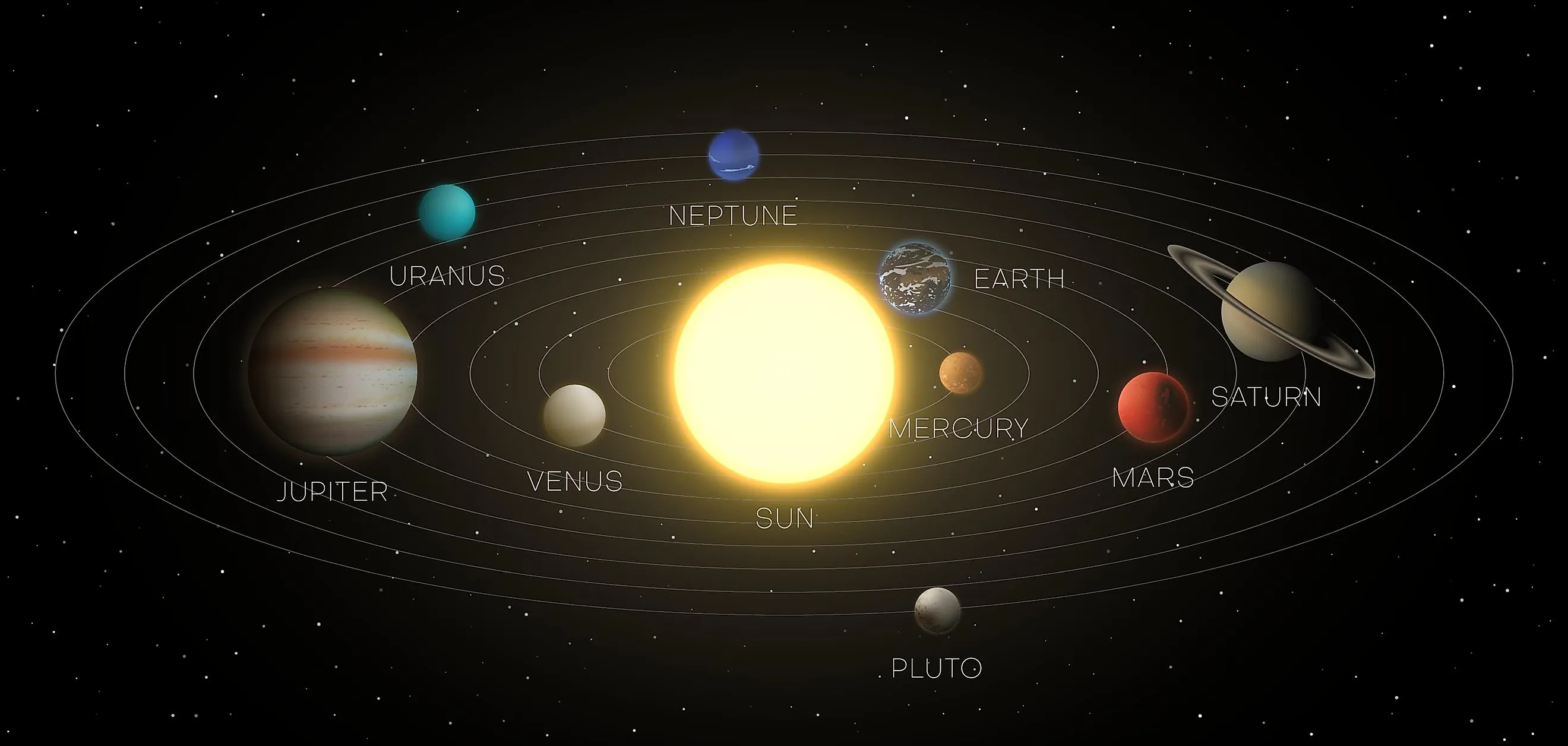
What Are The Planets Made Of?
Our solar system is home to eight different planets that are classified into three different types: rocky planets, gas giants, and ice giants. The four inner planets, Mercury, Venus, Earth, and Mars, are all rocky worlds. Jupiter and Saturn are both gas giants, while the outermost planets, Uranus and Neptune, are ice giants. Whether a planet is a rocky world, gas giant, or ice giant is dependent upon its composition. What are each of the planets made of?
Mercury
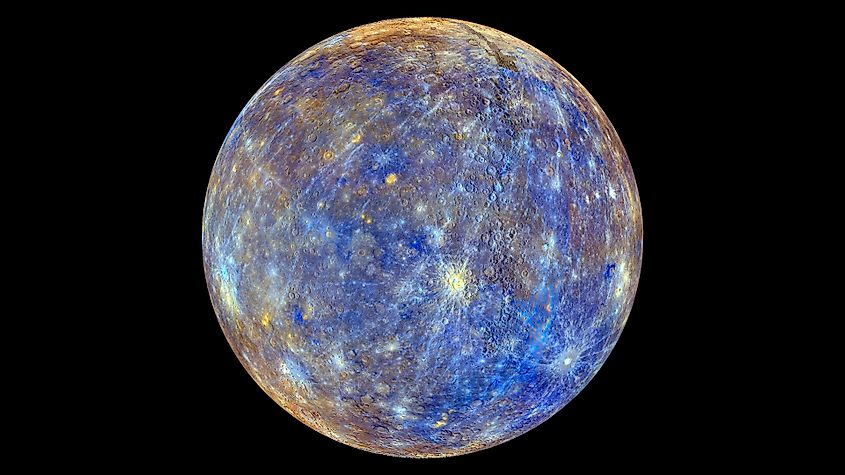
Mercury is the innermost planet of the solar system, orbiting the sun at an average distance of 58-million kilometres. Mercury is also the smallest planet in the solar system with a diameter of 3,031-miles (4,878-kilometres). Despite its small size, however, Mercury is actually the second densest planet in the solar system after the Earth, and this is due to the composition of its core. Mercury possesses a core of iron, a fairly dense material. Interestingly though, relative to Mercury’s size, it has the largest iron core of all the inner planets, and it accounts for over 40% of the volume within Mercury's interior. Meanwhile, the surface of Mercury is primarily composed of silicate rock. Scientists estimate that 70% of Mercury is metal, and the remaining 30% is rock.
Venus
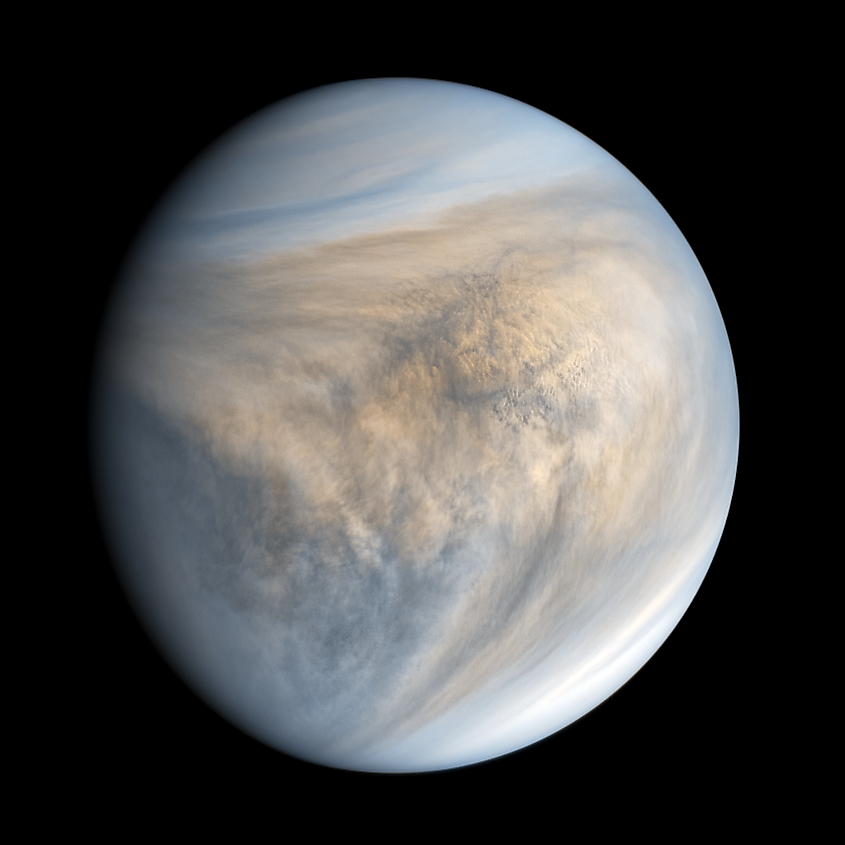
Venus is the closest planet to Earth and the most similar to our world in terms of size and mass. Since Earth and Venus are located so close to each other, they have similar compositions. Venus is believed to have an iron core surrounded by a mantle and crust composed of rock and metal. Unlike Earth, however, the surface of Venus is dominated by volcanic rock. Furthermore, the atmosphere of Venus is significantly different from our world. The Venusian atmosphere is 96% carbon dioxide, which causes the planet to experience a runaway greenhouse effect that creates the highest surface temperatures in the solar system.
Earth
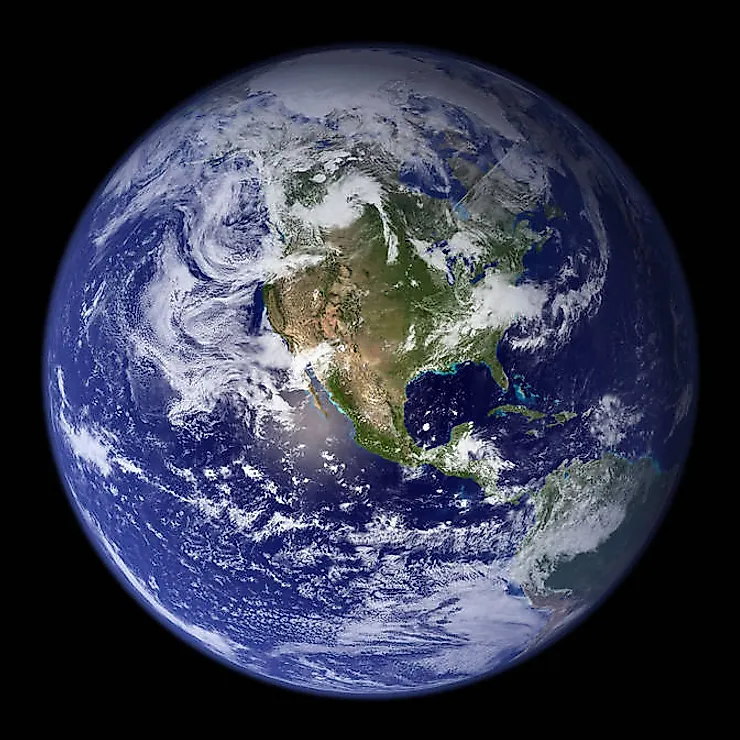
Like Mercury and Venus, Earth has a core composed mostly of iron, along with small amounts of nickel and other metals. The surface of our world is dominated by silicate rock. Thus, the Earth has many similarities to the other rocky planets in terms of composition, yet one very unique aspect of our world is its atmosphere. Unlike every other planet in the solar system, the Earth’s atmosphere contains high amounts of oxygen. Oxygen makes up 21% of the atmosphere, while nitrogen makes up 78%. The remaining 1% is composed of various other elements and compounds such as argon, carbon dioxide, and methane.
Mars
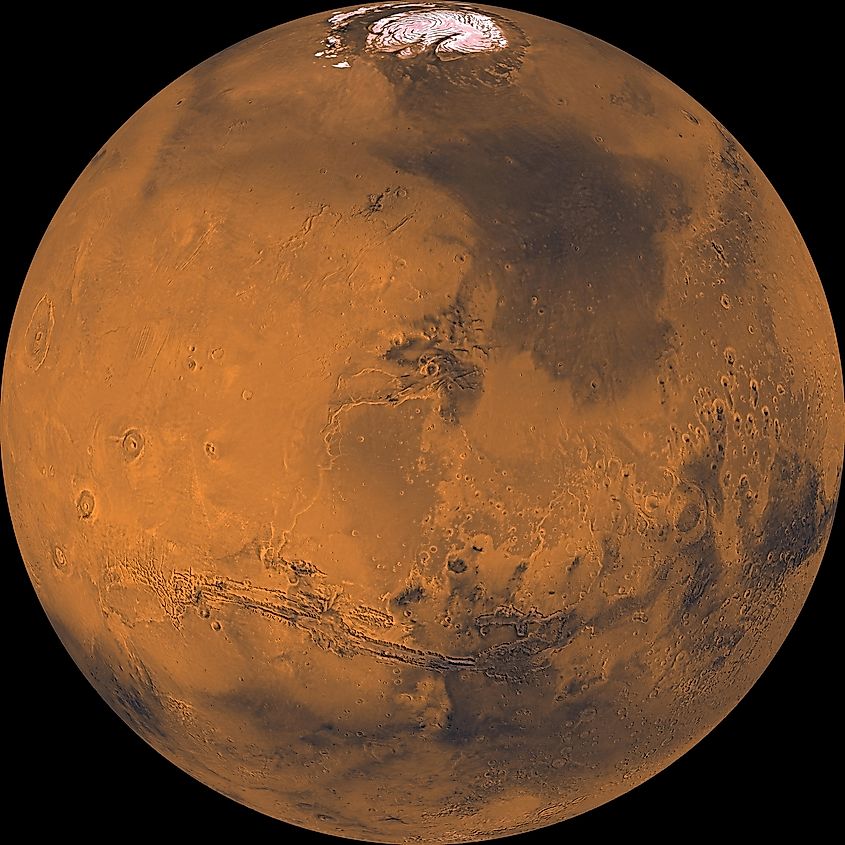
Mars is the outermost of the rocky planets, and it is perhaps the most studied planet in the solar system after the Earth. Like the other three rocky planets, Mars has an iron core sounded by a surface of silicate rock, yet there are some unique features of Mars, such as frozen carbon dioxide and monoxide at its poles. The atmosphere of Mars is around 90% carbon dioxide, yet the atmosphere itself is too thin to induce any kind of significant greenhouse effect, and so the surface remains bitterly cold.
Jupiter
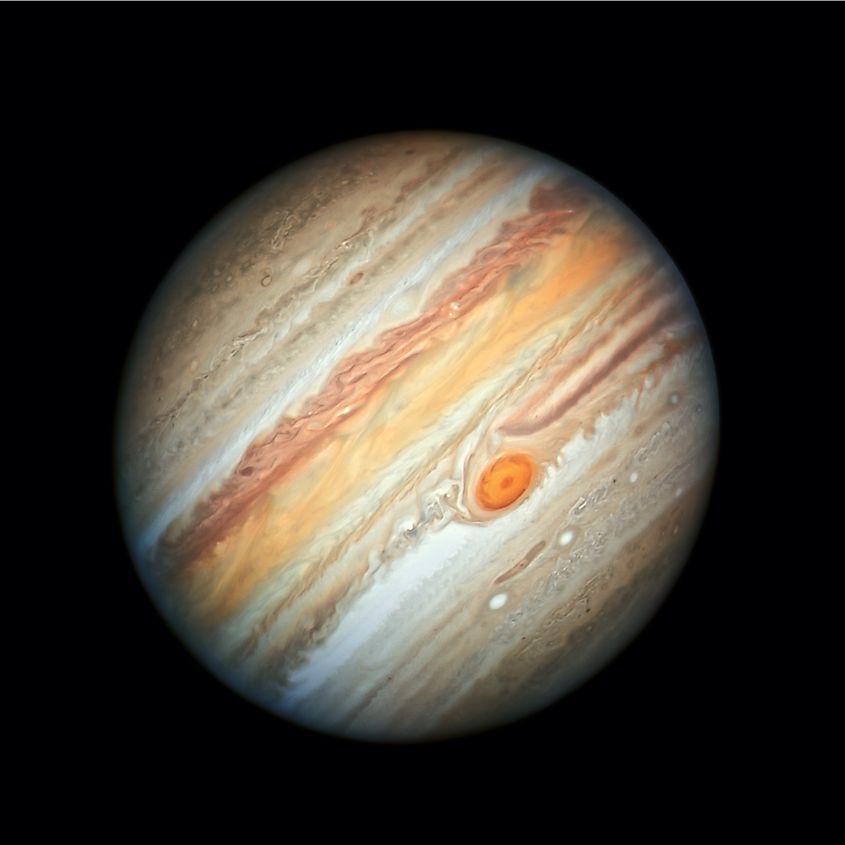
Jupiter is the largest, most massive planet in the solar system. Despite its large size, its composition is rather simple. Jupiter is primarily composed of just two elements: hydrogen and helium, along with trace amounts of other chemicals such as water, sulfur, methane, and ammonia. Around 90% of Jupiter is hydrogen, while the remaining 10% is almost entirely helium. However, although other chemicals only exist in minuscule amounts, they do play a significant role. For example, sulfur and organic compounds are believed to be the reason behind various shades of red in Jupiter’s atmosphere. Although hydrogen makes up most of Jupiter’s composition, not all of it comes in the same form. Deep below the upper cloud layers of Jupiter, pressures and temperatures become so high that hydrogen becomes a metallic liquid. This layer of liquid metallic hydrogen is able to conduct electricity, which in turn generates the magnetic field of Jupiter, which is the largest of all the planets.
Saturn
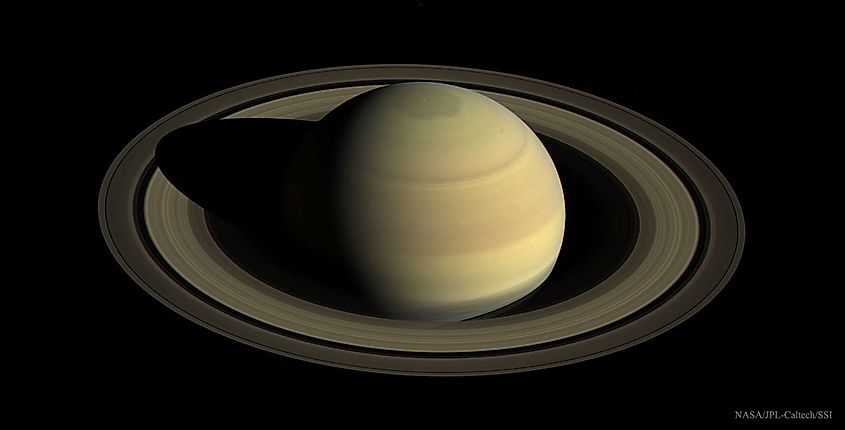
Saturn is very similar to Jupiter in terms of composition. Like Jupiter, Saturn is primarily composed of hydrogen and helium, along with trace amounts of other chemicals. Despite its nearly identical composition, however, Saturn looks significantly different than Jupiter, almost as if it’s a watered down version of Jupiter. This is likely due to the fact that Saturn is located much further from the sun. It is also likely due to the presence of a layer of ammonia ice crystals in the planet’s upper atmosphere.
Uranus And Neptune
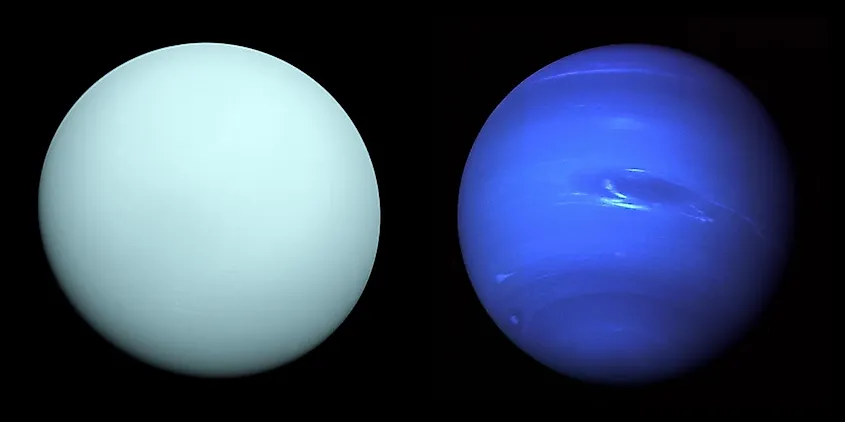
Like Jupiter and Saturn, Uranus and Neptune are both primarily composed of hydrogen and helium. However, the two outermost planets are somewhat different in terms of composition. Hydrogen and helium are not as abundant on Uranus and Neptune, and there is a higher presence of other chemicals. Interestingly, the densities of Uranus and Neptune are primarily determined by the existence of various ices in their atmospheres, and so rather than being classified as gas giants, they are classified as ice giants. Uranus and Neptune both contain higher amounts of methane, ammonia, and water. In fact, the presence of methane is believed to be the cause of both Uranus and Neptune being blue.











